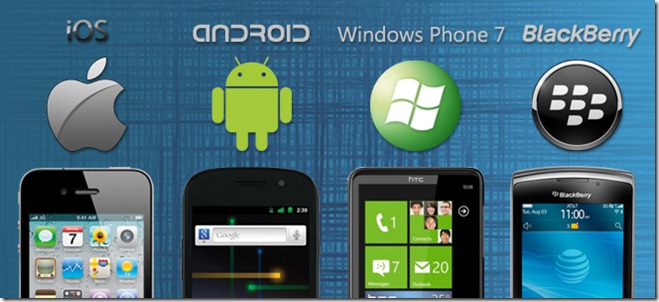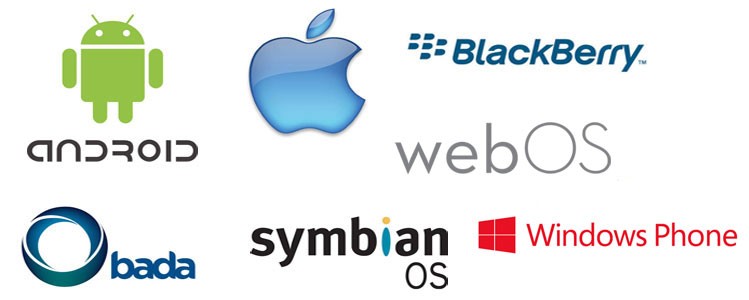Smartphone Operating Systems: The Backbone of Mobile Technology
The evolution of smartphones has been nothing short of remarkable, and a critical factor behind this growth is the advancement of smartphone operating systems (OS). These systems serve as the interface between users and the smartphone’s hardware, enabling all applications and functions to run smoothly. But what makes an operating system truly stand out in the crowded smartphone market? In this article, we will dive deep into the world of smartphone operating systems, their features, pros and cons, and how they shape our digital experience.

What is a Smartphone Operating System?
A smartphone operating system is the software that manages the hardware and software resources of a mobile device. It allows users to interact with their phones, run applications, manage tasks, and access a variety of services, such as browsing the internet, playing games, and connecting with others through messaging and social media apps.
At its core, the mobile OS is responsible for controlling everything that happens on your smartphone—from opening apps and sending texts to maintaining the performance of the device.
The Most Popular Smartphone Operating Systems
1. Android Operating System
Android is the most widely used smartphone operating system in the world, powering over 70% of all smartphones globally. Developed by Google, Android offers an open-source platform, allowing manufacturers like Samsung, Huawei, and OnePlus to customize it according to their device specifications. This flexibility has contributed to Android’s widespread adoption.
Key Features of Android:
- Customization: Android offers users the ability to change the user interface, install third-party apps, and tweak the system settings.
- Google Integration: Android devices are tightly integrated with Google’s services such as Gmail, Google Maps, and Google Assistant.
- App Store: The Google Play Store is the largest app store in the world, with millions of applications available for download.
- Wide Device Compatibility: Android OS powers smartphones across a wide range of price points, from budget devices to premium flagship models.
Pros:
- Customization: Users can personalize their phones to suit their preferences.
- Wide App Availability: Access to millions of apps, including both free and paid options.
- Affordable Range: There’s a wide variety of Android phones available, making it accessible to everyone.
Cons:
- Fragmentation: With many manufacturers customizing Android, the user experience can vary widely between devices.
- Security Concerns: The open-source nature of Android can sometimes lead to vulnerabilities in certain apps or devices.
2. iOS
iOS, developed by Apple, is the operating system that powers all of Apple’s mobile devices, including the iPhone, iPad, and iPod Touch. Unlike Android, iOS is a closed-source platform, meaning only Apple has control over its development and distribution.
Key Features of iOS:
- User Experience: Known for its seamless and intuitive user interface, iOS offers a uniform experience across all Apple devices.
- App Store: The App Store offers a curated selection of apps, often of higher quality and more optimized than those on Android.
- Security: iOS is widely regarded as a more secure operating system due to its controlled ecosystem and strict app review process.
- Hardware and Software Integration: Because Apple designs both the hardware and software, iOS devices tend to perform very efficiently and consistently.
Pros:
- Smooth Performance: iOS offers optimized performance, even on older devices.
- Regular Updates: iOS devices receive regular software updates, ensuring users have access to the latest features and security patches.
- Premium Build Quality: iPhones and other Apple devices are built to last and tend to have a premium feel.
Cons:
- Limited Customization: Unlike Android, iOS offers less flexibility in terms of user customization.
- Expensive Devices: iPhones generally come with a higher price tag compared to Android devices.
3. HarmonyOS
HarmonyOS is a relatively new mobile operating system developed by Huawei. Initially launched as a replacement for Android on Huawei devices, it has gradually expanded into a broader ecosystem for smart devices, including tablets, smart TVs, and even wearable tech.
Key Features of HarmonyOS:
- Multi-Device Integration: HarmonyOS aims to create a seamless ecosystem where smartphones, tablets, laptops, and other smart devices work together in harmony.
- Distributed Technology: HarmonyOS is built on a distributed architecture, allowing devices to share computing resources and capabilities with each other.
- User-Centric Interface: The operating system emphasizes easy navigation and smooth transitions between devices.
Pros:
- Seamless Multi-Device Support: HarmonyOS offers great connectivity with Huawei’s broader ecosystem of smart devices.
- Fast and Fluid Interface: The operating system is designed to be intuitive and responsive.
- Privacy and Security: Huawei places a strong emphasis on data privacy, with enhanced security features.
Cons:
- Limited App Support: The app ecosystem for HarmonyOS is still growing, which means it lacks the wide variety of apps available on Android and iOS.
- Regional Availability: HarmonyOS is primarily available on Huawei devices, limiting its accessibility outside of China.
Emerging Smartphone Operating Systems
While Android and iOS dominate the smartphone market, several emerging operating systems are seeking to carve their niche in the mobile space. Here are a couple of noteworthy contenders:
4. Windows Phone (No Longer Active)
Windows Phone, developed by Microsoft, was once a strong competitor in the mobile operating system market. However, after Microsoft’s decision to discontinue the platform, it is no longer a viable option for new smartphones.
5. KaiOS
KaiOS is a mobile operating system designed for feature phones. It offers a lightweight, fast, and easy-to-use interface while supporting apps like WhatsApp, YouTube, and Google Assistant. It is currently used on many budget-friendly smartphones and smart feature phones.
Smartphone Operating System Comparison
| Feature | Android | iOS | HarmonyOS | Windows Phone |
|---|---|---|---|---|
| Customization | High | Low | Medium | Medium |
| Security | Moderate | High | High | Moderate |
| App Store | Google Play Store | App Store | Huawei AppGallery | Microsoft Store |
| Device Range | Wide (Budget to Premium) | Premium | Mid-range to Premium | Limited Availability |
| Multi-Device Support | Limited | High | High | Low |
Why Smartphone Operating Systems Matter
The operating system is the heart of a smartphone. It dictates everything from the user interface to app compatibility, performance, security, and system updates. The choice of an OS directly affects:
- User Experience: A smooth, intuitive OS ensures a great experience.
- App Ecosystem: A rich app ecosystem is essential for finding the tools you need.
- Updates & Support: OS updates keep devices secure and introduce new features.
FAQs About Smartphone Operating Systems
Q1: What is the best smartphone operating system?
The best operating system depends on personal preference. iOS offers a premium, secure experience with excellent hardware and software integration, while Android provides a more customizable and open platform. If you value seamless integration with multiple devices, HarmonyOS may be worth exploring.
Q2: Is Android or iOS better for gaming?
Both Android and iOS offer robust gaming capabilities. iOS is often preferred for high-performance gaming due to optimized hardware and software, while Android offers a wider variety of devices, making it more accessible to budget-conscious gamers.
Q3: Will Windows Phone ever make a comeback?
Windows Phone is no longer supported by Microsoft, and there are no signs that it will make a comeback. The operating system was discontinued in favor of Windows 10 Mobile, which has also been phased out.
Q4: Can HarmonyOS compete with Android and iOS?
HarmonyOS is still growing and lacks the app ecosystem that Android and iOS offer. However, Huawei is committed to developing the OS and is expanding its capabilities, especially for connected devices.
Conclusion
Smartphone operating systems are the backbone of mobile devices, influencing every aspect of how we use our phones. Whether you’re looking for customization, performance, or security, the choice of smartphone OS will play a significant role in shaping your digital experience.
As technology continues to advance, we can expect innovative operating systems like HarmonyOS to challenge the dominance of Android and iOS. Regardless of which OS you prefer, each system offers distinct features that cater to different user needs. Understanding these operating systems allows users to make informed decisions when choosing their next device.
For more detailed insights into smartphone technologies, visit TechRadar.


